What to do in the garden this August
Hurry if you haven't pruned your citrus trees, the window is closing. Learn how to grow an abundance of food in your garden with the Micro Gardener
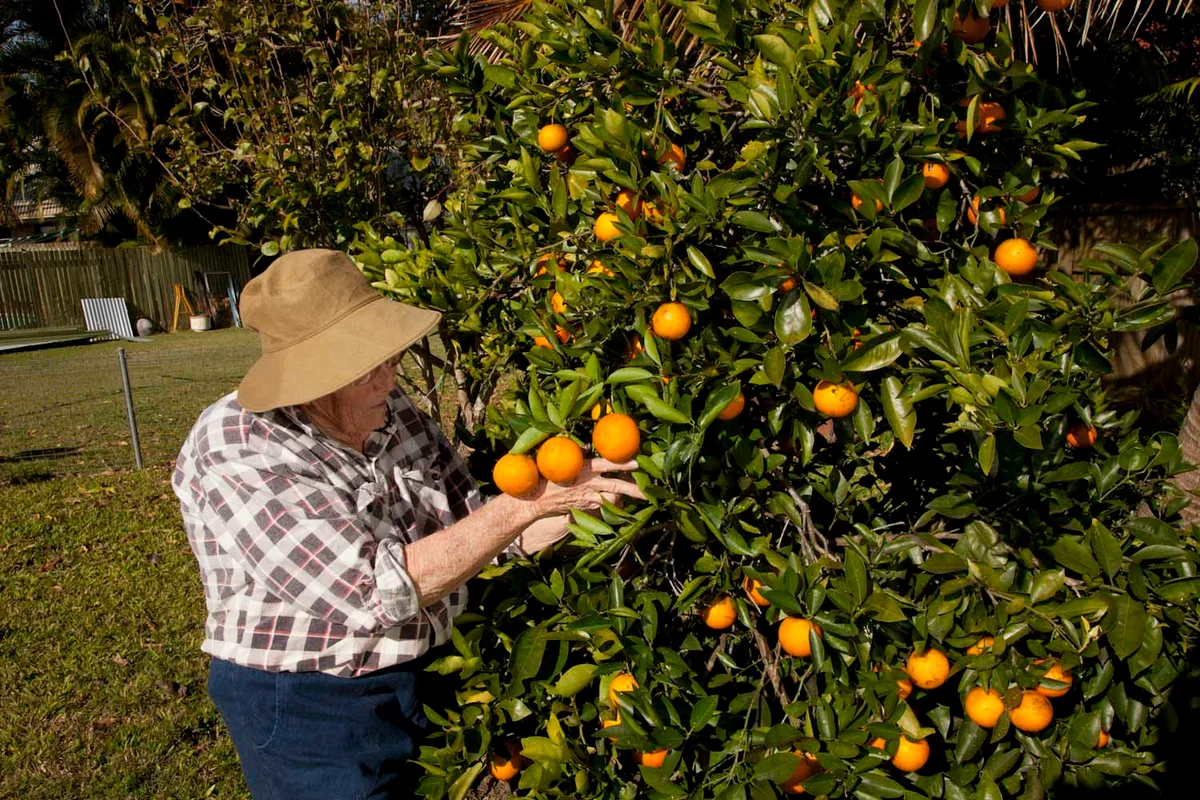
Anne Gibson, The Micro Gardener is helping Sunshine Coast gardeners on their food growing journey. Each month she shares her top tips from garden tasks to what to plant and harvest.
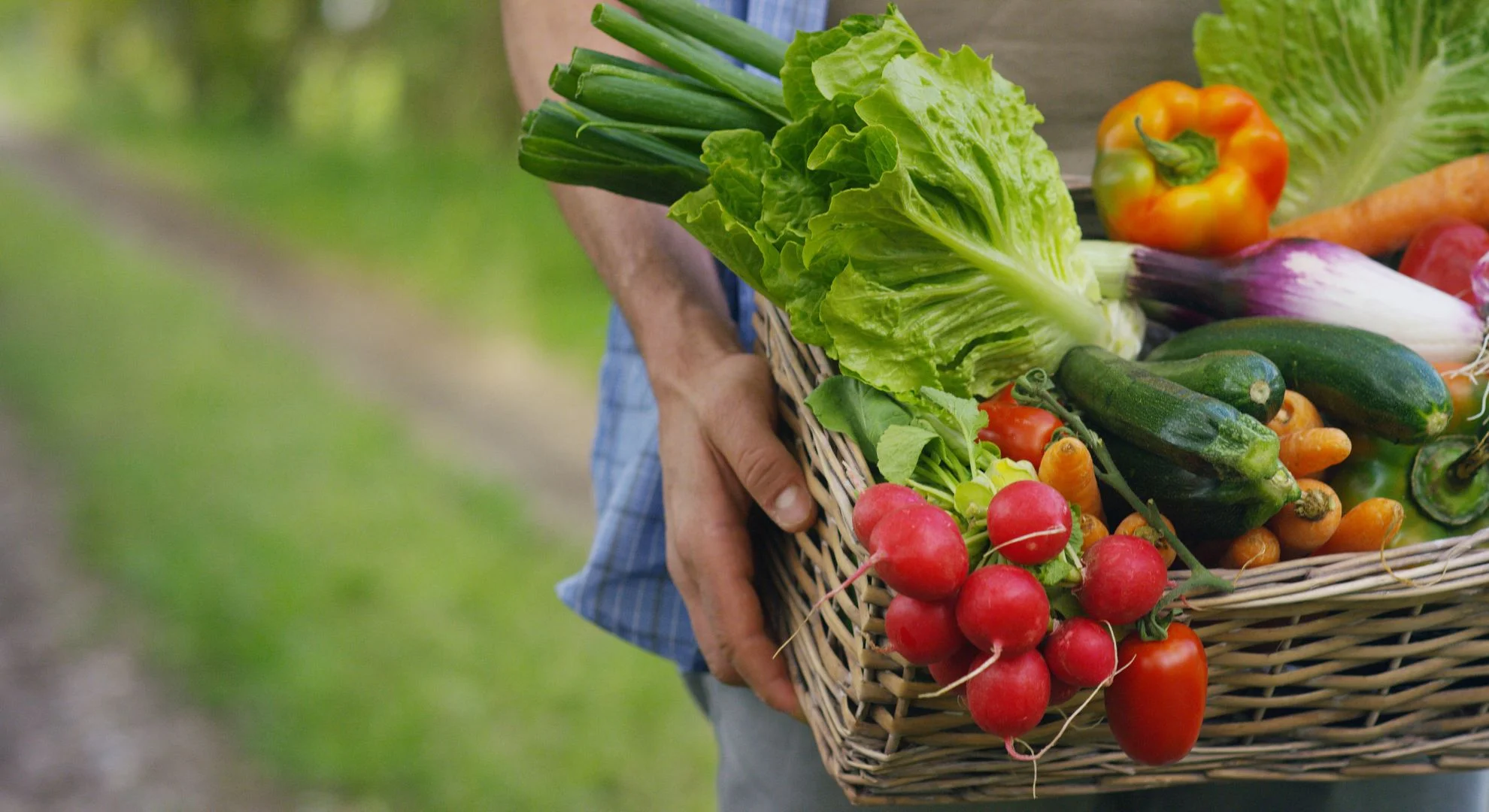
basket of fresh vegetables
August Seasonal Gardening Tips – Subtropical Queensland
We typically transition from winter around the end of July into August. Daytime temperatures start to warm up although nights can still be cool.
Areas prone to frosts finish as a signal Spring is arriving. It’s a time to prune back any frost-damaged plants and compost them. Check your seed packets and get the last of your short-maturing cool season crops in and sow more flowers. You can also sow herbs and vegetables as microgreens.

Microgreens
Insects that have been overwintering start to come out of hibernation and you will notice more activity in your garden. This coincides with Nature providing a food source for baby birds arriving in Spring.
Why is it essential to grow flowers all year?
As we head into Spring, it's particularly important to have a nectar and pollen food source for pollinators and beneficial bugs.
Predatory insects like ladybirds, hoverflies and parasitic wasps feed on nectar as a supplementary food source. Their favourite meals include caterpillars, aphids, scale and mealybugs.
You want to attract these garden guardians into your garden to help pest management naturally. They help keep a balance of ‘pest’ insects in check. Sow edible flowers!
Drying winds and soil
August typically has drying winds, so it’s essential to cover your soil to hold moisture in. To minimise wind damage, pay attention to watering and provide crop protection. You’ll also notice seeds will germinate a little faster as the soil warms up. Prepare your soil well! Add compost, nutrients and mulch it ready for planting.
Spring growth
As Spring arrives, it’s likely you will notice plants starting to ‘wake up’. Look for new growth like buds and leaves on fruit trees. Lavender, spring-flowering bulbs, jasmine, warm-season flowers and mock orange start to burst into bloom. Flowering perennials will start to bud up and spring-fruiting varieties put on new growth.
Mowing
You’ve probably enjoyed not having to mow as often, but lawns may be struggling to stay healthy. So you’ll likely see more weeds emerging. Keep on top of the mowing and whipper snipping to avoid seed heads forming.
Top dress with a light layer of compost and rock minerals, watered in with liquid seaweed and diluted Epsom salts. This will encourage strong root development and a thicker thatch to minimise weeds.
Leave the catcher off your mower to self-mulch and return nutrients to the soil for a healthier lawn.
Prune your citrus trees
If you haven’t pruned your dormant citrus and fruit trees and you are already seeing new growth, you may have already missed the boat. Get to it if you still need to do this job or wait till next year!
If you want to plant more fruit trees, you can still source bare-rooted varieties to save money on your urban orchard and potted cultivars will be ready to plant out.
As plants don’t grow as strongly over the cooler months, they don’t have the same water requirements. This will change in Spring. So adjust your watering to avoid wasting this precious resource but then keep up with new growth as it appears.
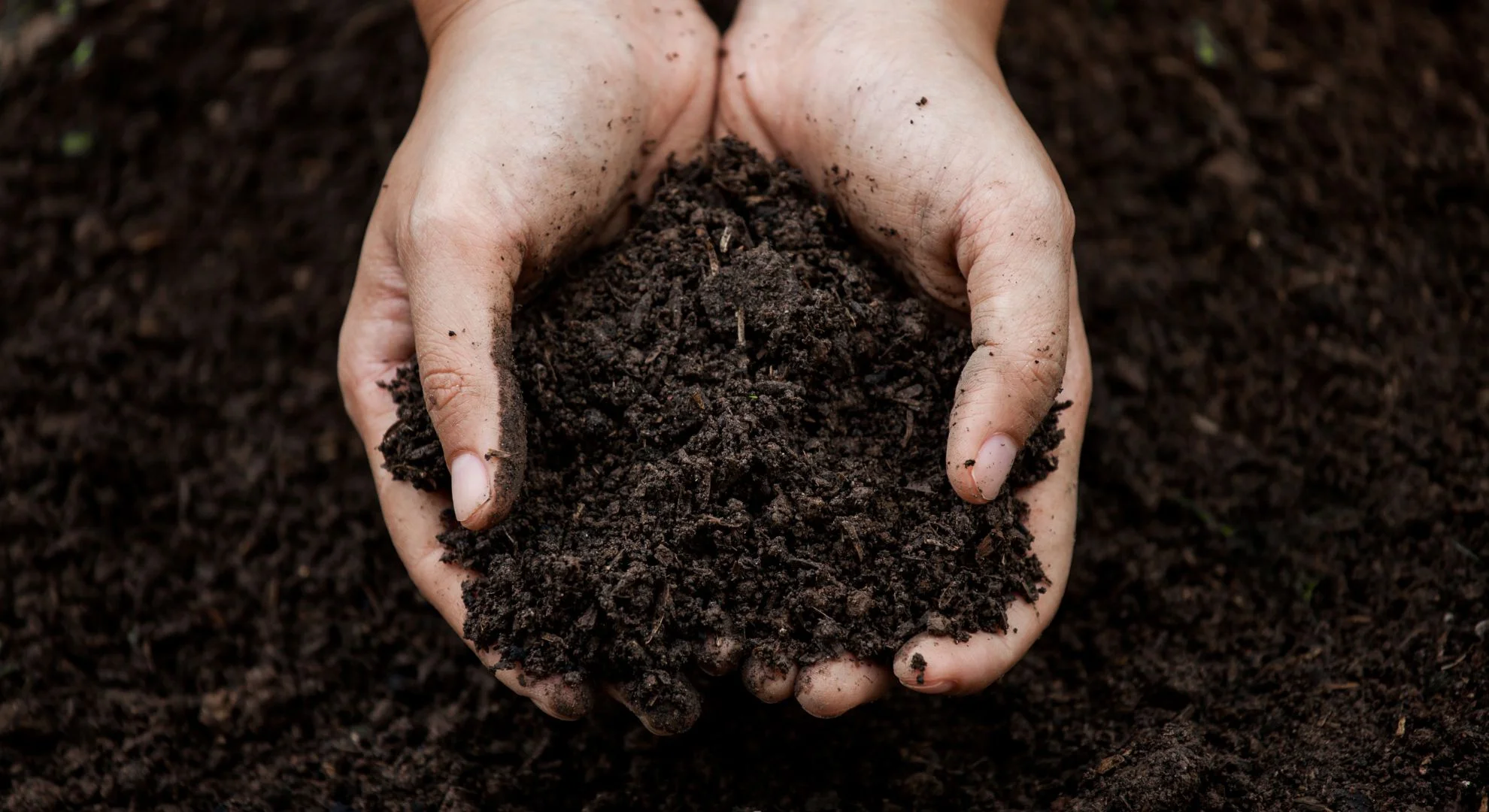
hands holding soil
Continue adding compost and worm castings for nutrient-rich soil and enriched potting mix for food crops. Even better, make your own moisture-holding potting mix and seed raising mix blends to save money, and water and give plants the best chance of thriving.
Old potting mix in your container gardens may be nutrient-depleted, hydrophobic and need refreshing before new plantings.
Follow my DIY Potting Mix Guide to improve bagged potting mix or make your own with easily available ingredients for long-lasting, moisture and nutrient-holding soil.
Lifeless, dry dead dirt won’t grow healthy produce so invest in your health by focusing on your soil first.
What to Plant in August
If you’re not sure when each of our five seasons starts and ends, or what to plant each month, refer to the perpetual Subtropical Planting Guide. These are some vegetables to start with.
Vegetables
This is prime time for sowing
- Asian greens, dwarf/bush beans, beetroot, capsicum, carrots, celery, chard, chia, Chinese cabbage, comfrey, cool-season cucumber
- green manures, eggplant, fennel, kale, leek, lettuce, mizuna, mustard, peas, potato, perpetual spinach, pumpkin
- radish, rocket, silverbeet, spring onions, squash, cherry tomatoes and zucchini.
If you are impatient for peas and beans, sow dwarf/bush varieties first, then climbers.
The bush peas and beans will produce flowers and pods earlier than climbing varieties because these need to put on more leaf growth before flowering.
The dwarfs will give you a quick crop and 3-4 harvests. By then, your climbers will be producing plenty of peas and beans and will last much longer so you can extend the harvest.
A simple strategy for enjoying these vegetables for longer. Sow some peas as microgreens for crunchy pea shoots.
If you want to save money instead of buying seeds or seedlings, watch this video the Micro Gardener created to help you learn how to grow food for free from kitchen ‘waste’.
The tips are so easy to apply and sustainable.
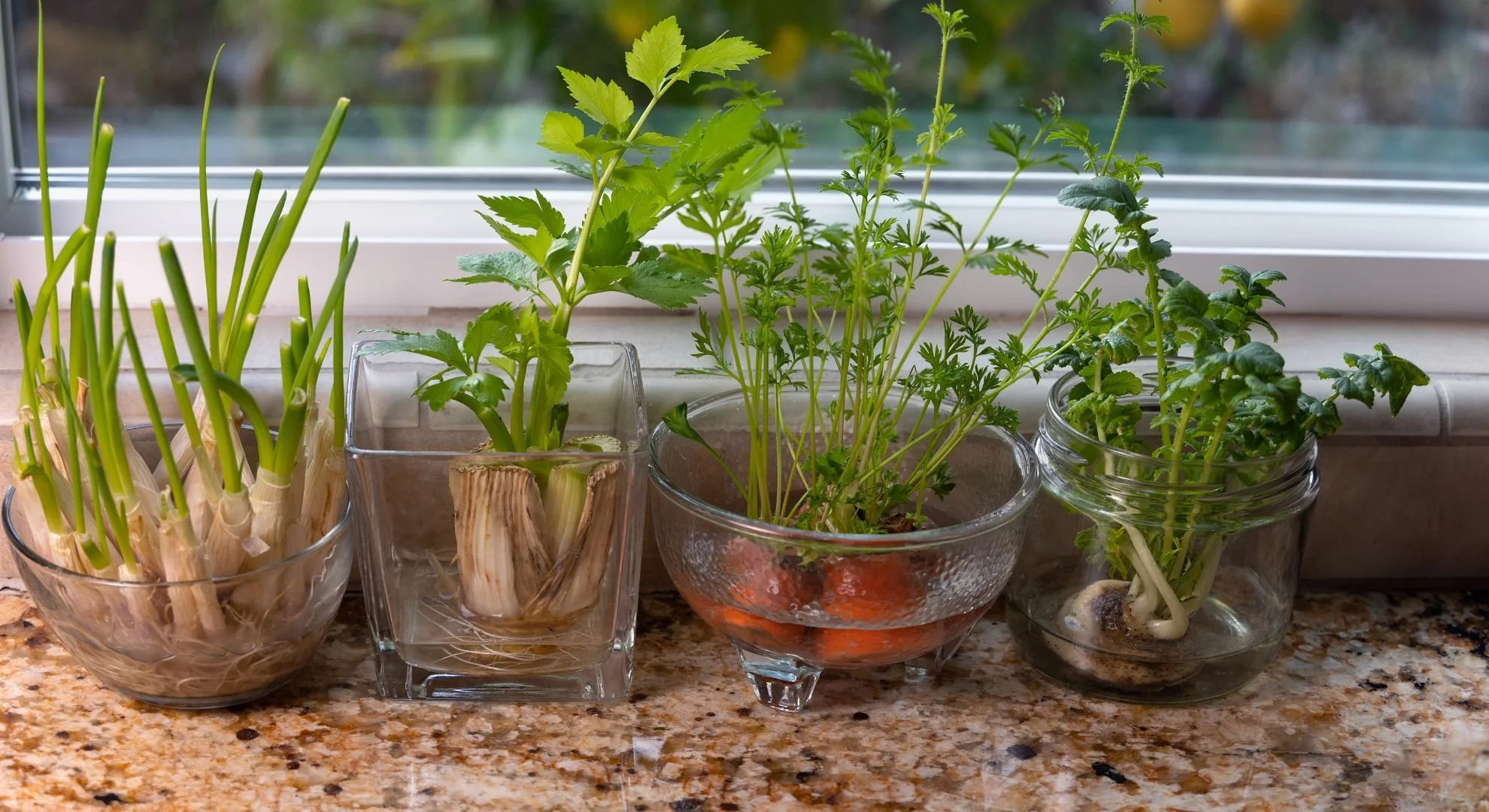
grown from kitchen scraps
Fruits
Try planting
- avocado, blueberry, carambola, citrus, coffee, feijoa, grape, guava, kiwifruit
- mulberry (easy from cuttings taken in the new moon phase), nectarine, olive, papaya, passionfruit, peach (try tropical and dwarf varieties), pomegranate
- tropical apples and strawberry runners.
Tips
- Remember to remove any buds from young fruit trees so they can put energy into growing roots, not fruit in their first year.
- Feed your ‘mother’ strawberry plants well with compost and liquid seaweed to boost new root, shoot and flower growth. Time to sow new strawberry plants now too!
Herbs and flowers
Sow now
- american upland or land cress, angelica, basil, borage, calendula, celosia, chervil, chicory, chives, coriander (slow bolt), comfrey, dill,
- herb Robert, hyssop, lavender, lemon balm, lovage, marjoram, mint, nasturtium, oregano, parsley, perennial 'sawtooth' or mexican coriander
- rocket, rosemary, sage, salad burnett, sorrel, thyme, watercress, and tarragon.
Flowers
- calendula, cornflower, dianthus, marigold, lobelia, nemesia, pansy, petunia
- sweet alyssum, phlox, snapdragon, statice, strawflower, sweet pea and viola.
Interplanting
Interplant your herbs and flowers between vegetables (particularly brassicas) to attract beneficial predator insects to keep caterpillars and other insects in balance.
Issues to watch out for
Fruit fly is a threat we all live with. Mild winter temperatures can cause them to arrive earlier, with more generations recurring over coming months.
Put your traps in place to minimise damage and control the life cycle. Other strategies that may help are to select early fruiting trees to miss the fruit fly attack or cover with suitable exclusion netting.
Plant Nasturtiums to attract the Cabbage White Butterfly to lay eggs on these plants instead of your brassicas. Sacrificial plants make it easy to squish caterpillars in one spot instead of all over your garden.
Try interplanting Land cress or American Upland Cress to attract Cabbage Moths or Diamond Back Moths as a ‘dead end trap crop’ instead of your cabbage family edibles. The saponins in the leaves are toxic to the baby caterpillars, so they die, breaking the lifecycle.
A sneaky but effective strategy. Decoys, exclusion nets, cloches for young seedlings, interplanting and other organic controls can help you manage these pests.
Aphids will appear on new spring growth, along with scale and mealybugs so have your strategies ready.
Tasks
- Prune old asparagus ferns, feed and mulch.
- Divide and transplant arrowroot and garlic chives.
- Prune passionfruit vines to remove dead stems and deciduous fruit trees after frost.
- Feed, weed and mulch around fruit trees if you haven’t already done so.
- Maintain your tools, build garden beds while it’s cool and vertical structures ready for spring planting.
- Sow microgreens seeds for a continuous supply of nutritious leafy greens.
- pH test your soil and add any amendments. Aim for well-mulched nutrient-rich moisture-holding soil.
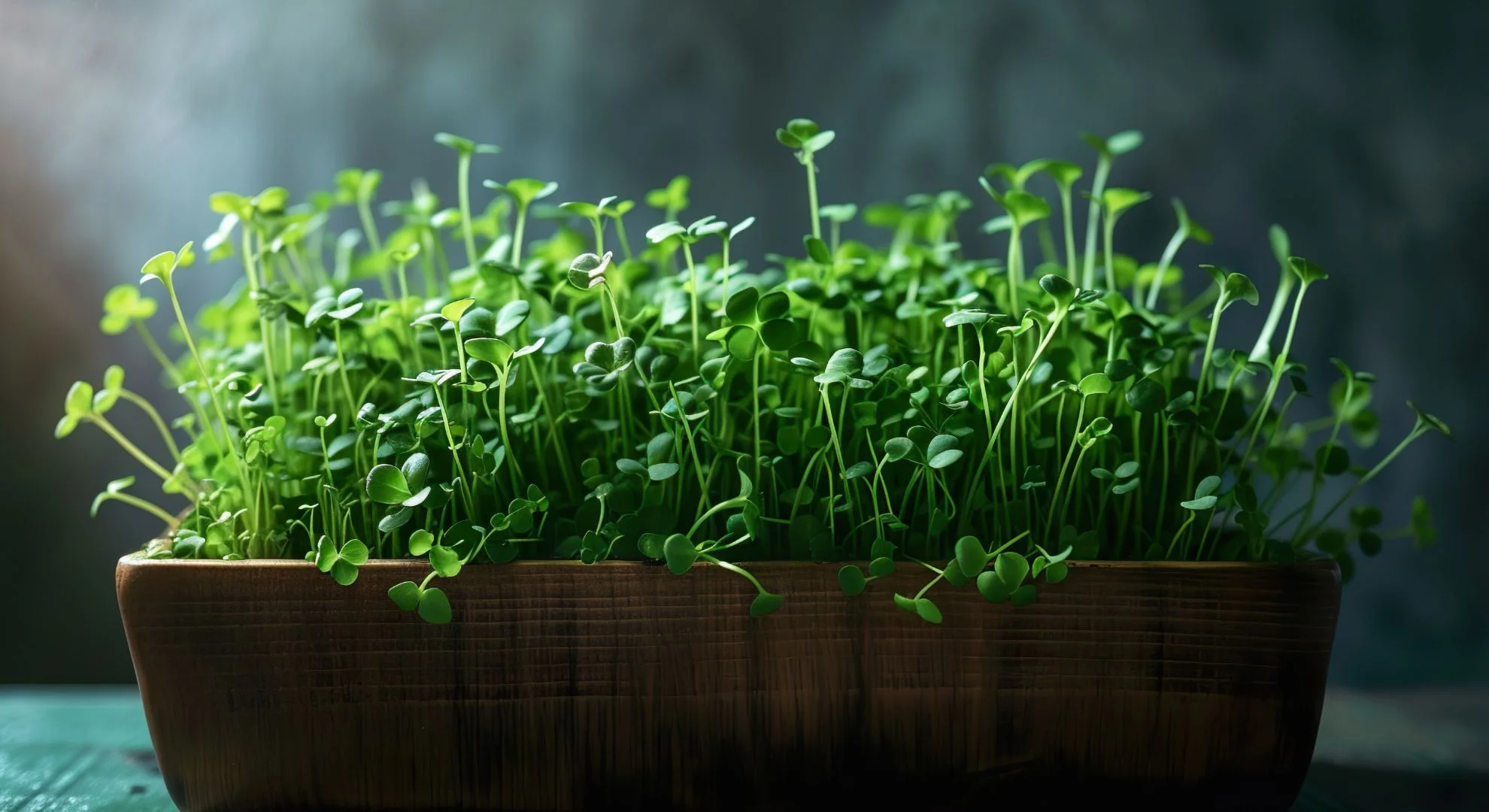
microgreens
Have fun and get planting! Enjoy this time of year and if you need one-on-one help, check out my onsite garden consultations and live chat garden coaching services to help fast track you to success.
Helpful Gardening Guides
- Subtropical Planting Guide – Designed specifically for our local climate’s five seasons.
- Moon Calendar Gardening Guide – Work with the moon’s cycles each month for optimum planting times.
- Microgreens Growing Guide Chart – A comprehensive guide to growing a wide variety of herbs and vegetables.
- Guide to Using Kitchen Herbs for Health – How to guide on growing and using 25 kitchen and medicinal herbs.
- Seed Starting Guide: Quick Tips for Starting Seeds Successfully – Everything you need to know!
- Design Tips for a Productive Kitchen Garden
- Check out all gardening guides and books here.
I hope you’ve enjoyed these tips. May the year ahead be filled with an abundance of good health and harvests! Happy gardening.
Kind regards,
Anne Gibson